Last Update:
FEB 15, 2020.
|
Recent Books on Transit, Bikes, Environment
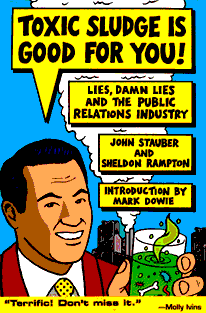 Sure, it's great to be a transit/auto-free activist! You go to and speak out at meetings, rallies, think-tanks and do-tanks. You support transit advocacy groups, you write letters and vote, you actually use public transportation, walk or bike. But at the same time it's crucial to grow an intellectual framework in the background to support your work, and that's where reading comes in. There are some great books in the list below, although they may be hard to find. (Please be sure to support your local independent bookseller, if you can still find one -- and then print out this list and ask that they stock some of these books!) Sure, it's great to be a transit/auto-free activist! You go to and speak out at meetings, rallies, think-tanks and do-tanks. You support transit advocacy groups, you write letters and vote, you actually use public transportation, walk or bike. But at the same time it's crucial to grow an intellectual framework in the background to support your work, and that's where reading comes in. There are some great books in the list below, although they may be hard to find. (Please be sure to support your local independent bookseller, if you can still find one -- and then print out this list and ask that they stock some of these books!)
Unfortunately, many of these books are market-censored by NYC's establishment media and remaining corporate chain-bookstores; and though NYC's public libraries may stock thousands of new trash novel, sci-fi, reactionary hatchet jobs, murder mystery and cookbook titles on their shelves, they are unable to obtain even a single copy of many of the books listed here. When they do have a copy, it is buried deep in the reference collection, or, to deter casual browsers, assigned to an obscure branch library. Trying to put a hold on that one copy may result in a "permanent hold", "in transit", "missing", "on order" or "lost" message.
With this approach to new and recent books on urban studies, NYC's libraries, despite all their advertising rhetoric and public tax dollars, do not well serve the nation's pre-eminent urban area of more than 8 million residents. But all New Yorkers can be proud of the many millions of dollars the Library spent in the Bloomberg era refurbishing the stone exterior of their flagship building at Fifth Avenue and 42nd Street. (Ominously, the library's controversial Bloomberg-era Central Plan, caught up in real estate machinations, would have done away with books altogether, replacing its flagship on 40th Street with a basement internet cafe where misfits check emails and addicted kids play first-person-shooter video games.] Although the threat of banishment of actual books looms ever larger in our libraries, and plans are now afoot to sell, shrink and sink even more library branches and replace them with luxury condo hi-rises, at least we can be thankful the awful Central Plan was ended when Mayor de Blasio took office in 2014. We urge anyone who cares about books and our public libraries to visit the
Citizens Defending Libraries online blog for more information about this ongoing library crisis.)
With some 200 to 300 new book titles on all subjects being published worldwide every day, this list does not pretend, of course, to be complete - it is just a tiny few of the many books available today about New York, NYC, urban planning, transit, our ever-worsening car-caused crises, etc. The books are shown in most recent publication date order, and comments or reviews are kept as brief as possible, because we know you're busy organizing. Recently added or updated books have titles marked in red. Finally, the lack of any review here should not reflect positively or negatively on any book.
Books from 2020:
THE GEORGE WASHINGTON BRIDGE: Poetry in Steel
by Michael A. Rockland; Rutgers University Press, $29.95, 324pp.
This book is an updated edition of the original, rather obscure 2008 book, including a new chapter on the extreme-rightwing governor Chris Christie's disgraceful "BridgeGate" scandal of 2013. Professor Rockland teaches American Studies at Rutgers, and co-authored the also obscure 1989 Looking for America on the New Jersey Turnpike. The GWB was built to accommodate NYC subway trains, and in fact the A train tubes were built with a turnout for a future connector. It will be interesting to see if this book covers these plans - they were briefly mentioned in Joseph Raskin's 2014 book, The Routes Not Taken.
Books from 2019:
THE UNINHABITABLE EARTH: LIFE AFTER WARMING
by David Wallace-Wells; Tim Duggan Books, $27, 310pp.
David Wallace-Wells is a deputy editor of New York Magazine.
LOSING EARTH: A Recent History
by Nathaniel Rich; Farrar, Straus and Giroux, $25, 206pp.
An expanded version of the extended article detailing missed opportunities to halt climate change which occupied an entire issue of the New York Times Sunday Magazine, in August 2018.
PERILS OF PARTNERSHIP: Industry Influence, Institutional Integrity and Public Health
by Jonathan H. Marks; Oxford University, $26.99, 256pp.
Professor Jonathan Marks is a faculty member at Penn State U and director of its bioethics program. Here he goes over the often Faustian bargain that govts make with big corporations regarding public health, presenting case studies and caveats. Useful to New Yorkers for examining NYC's long and checkered history with public-private development and transportation partnerships.
Books from 2018:
FREE PUBLIC TRANSIT, and Why We Don't Pay to Ride Elevators
edited by Jason Prince and Judith Dellheim; University of Chicago Press, $26.99 paperback, 254pp.
A series of essays examining global applications of free public transit. Here's the list of essays:
1. Free Public Transit: Scope and Definitions (Wojciech Keblowski)
2. The Transport Spectrum and Vectors of Change (Jan Scheurer)
3. The Political Economy of Transport (Judith Dellheim)
4. Traffic Policy in Bologna: 'Free Fares Were Just the Beginning' (Max Jäggi)
5. Learning from Red Bologna (Maurizio Tira and Michelle DeRobertis)
6. Jamming Fare Boxes in Montreal (Jason Prince)
7. Belgium: Ending the Car Siege in Hasselt (Michael Brie)
8. Tallinn: Estonia Leads the Way With Free Public Transit (Allan Alaküla)
9. Poland: Take Your Potted Plant To Town (Lukasz Lugowski)
10. France: A 'New May 1968' in Aubagne? (Wojciech Keblowski)
11. Planka.nu: Jumping Turnstiles in Sweden (Anna Nygård)
12. Challenging the Impossible: Toronto (Herman Rosenfeld)
13. The US: Seeking Transit Justice from Seattle to NYC (Rosalie Ray)
14. Germany: Europe's 'Car Country' is Turning on its Head (Judith Dellheim)
15. Greece: Automobiles or Public Transport? (Georgios Daremas)
16. Brazil: From Dream to Nightmare (Paula Aftimus and Daniel Santini)
17. The Right to the City in Mexico (Lorena Zárate)
18. Riding for Free in a Chinese Metropolis (Wojciech Keblowski)
19. Value Capture: Linking Public Transport to Land Value (Jan Scheurer)
20. Concluding Remarks
OUR CAR [children's book]
by J.M. Brum, illustrated by jan Bajtlk; Roaring Brook Press, $16.99.
This book, to be read to very small children, shows a red convertible, seen only in profile in large, pastel-like images, fitting in to one child's life. Eventually, we find out the car makes noises and has to be repaired by a mechanic, at which point the family takes a (dreaded) bus to get somewhere. The bus, unlike the car on any page, can be seen emitting a spiraling plume of black smoke, and its riders are jammed in against each other, frowning, etc. The book ends with the child getting to drive - but only in his or her imagination. Meanwhile, the world's car population is now more than 1.5 BILLION. Cars, and the burning of fossil fuels, are one of the chief factors in worsening climate change that will soon be ruining the lives of the small children now having this book read to them.
SAVING CENTRAL PARK: A History and a Memoir
by Elizabeth Barlow Rogers; Knopf, $30, 301pp.
Books from 2017:
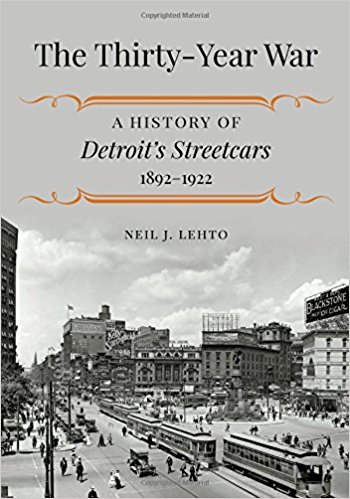
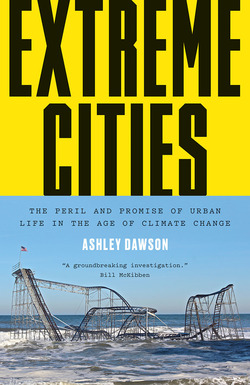 THE WATER WILL COME: Rising Seas, Sinking Cities, and the Remaking of the Civilized World
THE WATER WILL COME: Rising Seas, Sinking Cities, and the Remaking of the Civilized World
by Jeff Goodell.
This book is part of a new wave (pun intended) of climate change books that may help us grapple with what is coming to our society in the next five to ten years, if current trends aren't drastically changed.
VANISHING NEW YORK: How a Great City Lost Its Soul
by Jeremiah Moss; Dey Street Books, 420pp.
DIRECT ACTION: Protest and the Reinvention of American Radicalism
by L.A. Kauffman; Verso Books, 236pp.
EXTREME CITIES: The Perils and Promise of Urban Life in the Age of Climate Change
by Ashley Dawson; Verso Books, $29.95.
CLIMATE OF HOPE: How Cities, Businesses, and Citizens Can Save the Planet
by Michael Bloomberg and Carl Pope; St. Martin's Press, $26.99, 264pp.
Michael Bloomberg, the mega-billionaire and former Mayor of NYC and Carl Pope, the former executive director of the Sierra Club, and now a senior climate adviser to Bloomberg, co-authored this book, which is controversial in some environmentalist circles due to its strong support of climate capitalism. In the conclusion of the book, they unwittingly expose their core belief: "We can stop global warming. Not by slowing down economics but by speeding them up." In other words, business as usual with a few tweaks and eyewash. Bloomberg, like all NYC mayors, left behind a mixed record. He did some good things for a less auto-dominated city, like making Times Square mostly car-free in 2010, by adding a lot of bike lanes, planting a lot of trees, launching a pilot bioswale program and in 2007 publishing a comprehensive environmental overview, PlaNYC. Unfortunately the publisher skimped on "Climate of Hope" by not including an index.
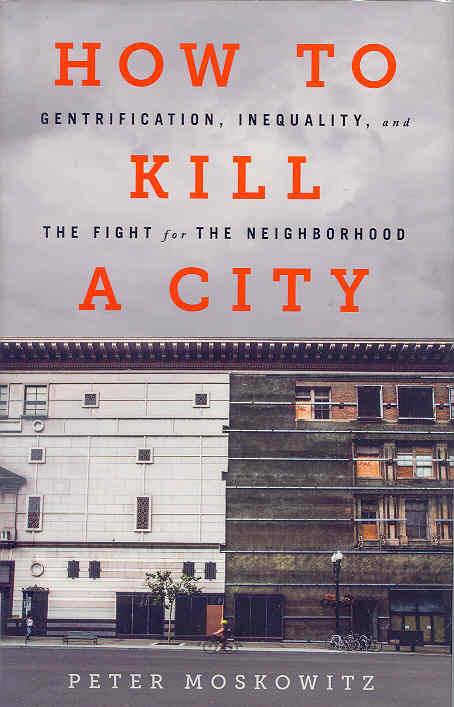 THE THIRTY-YEAR WAR: A History of Detroit's Streetcars
THE THIRTY-YEAR WAR: A History of Detroit's Streetcars
by Neil Lehto, Michigan State U Press, $39.95, 338pp.
This book looks at the struggle between the City of Detroit and its various street railway companies between 1892 and 1922. The checkered labor, economic and social history of street railway companies is another area ripe for quality books to examine. This book's cover image shows one of that city's former great public squares, featuring trolleys, a handsome ensemble of dignified buildings, and open, semi-pedestrianized space - priceless urban elements that American cities are discovering are not easy to or even impossible to recreate, once lost.
HOW TO KILL A CITY: Gentrification, Inequality and the Fight for the Neighborhood
by Peter Moskowitz; Nation Books, $26.99, 258pp.
Peter Moskowitz, a journalist, examines the catastrophic effect of hyper-gentrification on four American cities: New Orleans, Detroit, SF and New York.
Books from 2016:
POWER AT GROUND ZERO: Politics, Money and the Remaking of Lower Manhattan
by Lynne Sagalyn; Oxford U Press, $39.95, 901pp.
Exhaustively researched by Ms. Sagalyn, a professor emerita of real estate at Columbia's Business School, this 900-page doorstopper focuses on the rebuild of the World Trade Center site after 9/11. Much of the book is weighed down with the awful years of the Pataki and Giuliani regimes and their disastrous roles in the post-9/11 site rebuilding saga, which included cost overruns in the hundreds of billions of dollars, of public money, without any significant transit improvements. Sagalyn was unable to spend even a sentence or two on the efforts by transit advocates to get the Port Authority, in a once-in-a-century opportunity, to add a couple hundred feet of connecting track between the PATH trains and the #6 subway lines, that would have linked up the two systems and made regional non-automobile travel easier for millions.
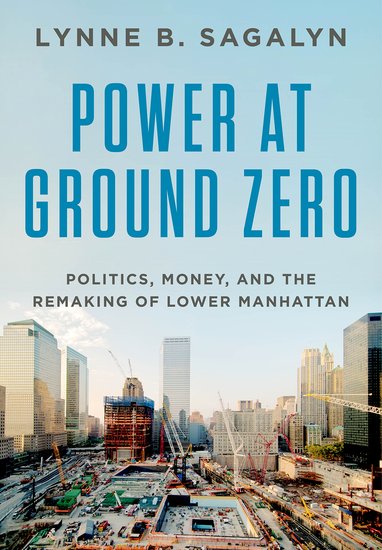 HALF-EARTH: Our Planet's Fight for Life
HALF-EARTH: Our Planet's Fight for Life
by Edward O. Wilson; Liveright Publishing (WW Norton), $25.95, 259pp. Indexed.
Edward O. Wilson, the Pulitzer-Prize winning biologist and naturalist, here eloquently argues for the natural world, claiming we can stave off mass extinction of many species by setting aside half the surface of the Earth for nature. He supplies several examples where nature preserves are working.
THE MADHOUSE EFFECT: How Climate Change Denial is Threatening Our Planet, Destroying Our Politics, and Driving Us Crazy
by Michael Mann and Tom Toles; Columbia U Press, $24.95, 186pp.
Michael Mann is a professor of atmospheric sciences at Penn State; Tom Toles is the Pulitzer Prize-winning cartoonist of the Washington Post. This must-read book is aimed at newcomers to the discussion on climate change, but all will benefit from its clear and concise writing and superb cartoons. Mann and Toles discuss the Koch brothers' role in promoting climate change denial, noting that among other acts, they have helped bankroll the PBS science series Nova, produced by WGBH in Boston. This has resulted in numerous Nova shows on obscure military history rather than on examining climate change, and David Koch apparently now has joined the board of trustees for WGBH, further censoring its output.
EYES ON THE STREET: The Life of Jane Jacobs
by Robert Kanigel; Knopf, $35, 482pp.
PANIC AT THE PUMP: The Energy Crisis and the Transformation of American Politics in the 1970s
by Meg Jacobs; Hill & Wang, $35, 371pp.
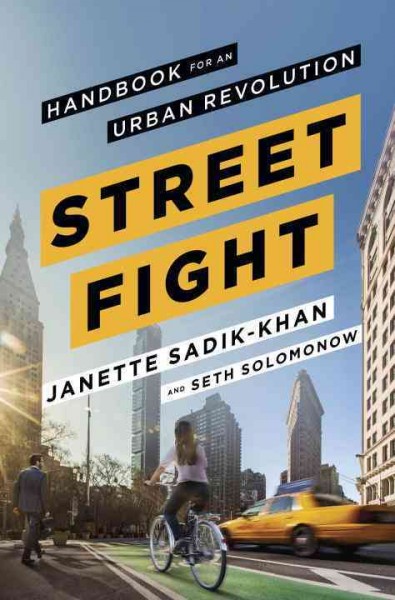 STREET FIGHT: Handbook for an Urban Revolution
STREET FIGHT: Handbook for an Urban Revolution
by Janette Sadik-Khan and Seth Solomonow.
Ms. Sadik-Khan, transportation commissioner under billionaire Mayor Mike Bloomberg, lays out just how bitter and prolonged the fight was, by ignorant and selfish New Yorkers, and by elements of the city's often thuggish corporate media, against modest improvements in bike lanes and pedestrianization in NYC during his terms in office. The sorry role of Iris Weinshall, Senator Chuck Schumer's wife, and others, in the ultimately losing battle against Brooklyn's now-popular Prospect Park West bike lane is laid out in some detail here.
Books from 2015:
LOOSED UPON THE WORLD: The Saga Anthology of Climate Fiction
edited by John Joseph Adams [Saga Press - Simon & Schuster], $27.99 (hardcover; paperback available], 565pp.
Most sci-fi is badly written swords-and-sandals epics transposed to outer space, or else relentless and dispiriting space wars with the bad guy wearing a Nazi helmet. Countering this written-word ghetto is this collection of short stories dealing with drastic climate change, compiled by longstanding sci-fi anthologist John Joseph Adams. Well known authors like Margaret Atwood, Robert Silverberg and Kim Stanley Robinson imagine the near future of our planet and human society, radically disfigured by the uncontrolled burning of fossil fuels. Most of these stories have been published in various venues over the past five years. To date, the anthology has not been reviewed by the paper of record, and of course, has been ignored by the denialist Wall Street Journal.
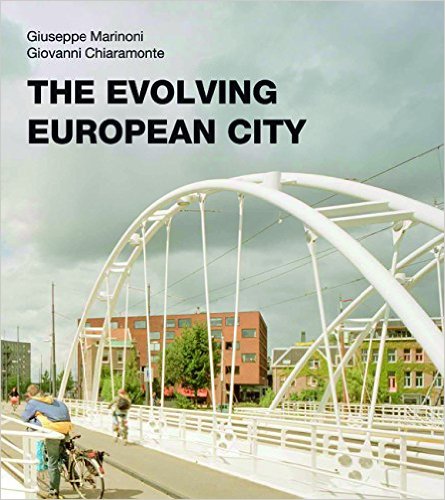 THE EVOLVING EUROPEAN CITY
THE EVOLVING EUROPEAN CITY
by Giuseppe Marinoni and Giovanni Chairamonte; McGill-Queens University [Canada] Press, $55, 272pp.
Not available in any NYC libraries yet - or perhaps ever. It is just unacceptably too sophisticated for NYC's libraries. Also available in paperback.
THE INFLUENCE MACHINE: The U.S. Chamber of Commerce and the Corporate Capture of American Life
by Alyssa Katz; Spiegel & Grau (Random House), $28, 315pp.
DISSENT: the History of an American Idea
by Ralph Young; NYU Press, 603pp.
Surprisingly readable wide-angle survey of dissent in America, from the Puritans to Occupy Wall Street. Ralph Young is a history professor at Temple University.
Books from 2014:
THE ROUTES NOT TAKEN: A Trip Through NYC's Unbuilt Subway System
by Joseph B. Raskin; Fordham Univ Press.
Joseph Raskin is an independent scholar and an executive in communications at MTA New York City Transit.
FIGHTING WESTWAY: Environmental Law, Citizen Activism and the Regulatory War That Transformed NYC
by William W. Buzbee; Cornell U Press, 292pp paperback.
William Buzbee is as of fall 2014 on the law faculty at Georgetown University. This is a detailed and readable account of the post-Robert Moses 15-year David-and-Goliath struggle over the Westway highway plan for Manhattan's West Side. AFNY founder George Haikalis was quoted in the book for a critique against Westway that he wrote while at the Tri-State Regional Planning Commission.
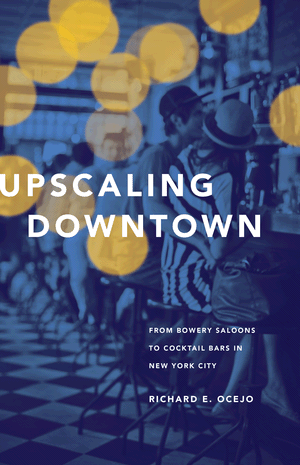 UPSCALING DOWNTOWN: From Bowery Saloons to Cocktail Bars in New York City
UPSCALING DOWNTOWN: From Bowery Saloons to Cocktail Bars in New York City
by Richard E. Ocejo; Princeton U Press, $35.00 hardcover, 272pp.
A look at how communities in NYC seem incapable of stopping the gentrification and subsequent destruction of their neighborhoods, with crummy bars and their audience of noisy revelers replacing mom-and-pop service stores, while politicians and the police look the other way. Richard E. Ocejo is assistant professor of sociology at John Jay College of Criminal Justice, CUNY.
RACHEL CARSON AND HER SISTERS: Extraordinary Women Who Have Shaped America's Environment
by Robert K. Musil; Rutgers U Press, 309pp.
Robert Musil, author of Hope for a Heated Planet (2009), is a journalist and senior fellow at a thinktank at American University, and the former CEO of Physicians for Social Responsibility.
HOW TO THINK SERIOUSLY ABOUT THE ENVIRONMENT: The Case for an Environmental Conservatism
by Roger Scruton; Oxford U Press.
LETHAL BUT LEGAL: Corporations, Consumption and Protecting Public Health
by Nicholas Freudenberg.
Freudenberg is a professor of public health and psychology at CUNY.
HELVETICA AND THE NEW YORK CITY SUBWAY SYSTEM
by Paul Shaw; MIT Press, $39.95, 144pp.
A DEADLY WANDERING: A Tale of Tragedy and Redemption in the Age of Attention
by Matt Richtel; HarperCollins, $28.99, 403pp.
Matt Richtel is a reporter for the NY Times, who won a Pulitzer for a series of articles about distracted driving that appeared in that paper in 2010, but which had little or no apparent effect on this new and dangerous behavioral disorder, brought on by corporate gadget marketing efforts.
NEW YORK'S UNDERGROUND ART MUSEUM: MTA Art and Design
by Sandra Bloodworth and William Ayres, Monacelli Press.
GOTHAM UNBOUND: The Ecological History of Greater New York
by Ted Steinberg; Simon & Schuster, $32.
Ted Steinberg is a Case Western University historian.
CONCRETE JUNGLE: NYC and Our last Best Hope for a Sustainable Future
by Niles Eldridge and Sidney Horenstein; Univ of California Press.
BROOKLYN'S PROMISED LAND: The Free Black Community of Weeksville, New York
by Judith Wellman; NYU Press, $5.
Books from 2013:
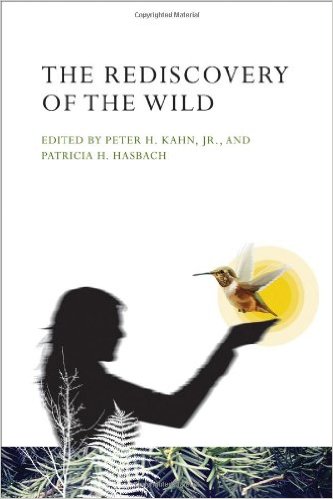
THE REDISCOVERY OF THE WILD
by Peter Kahn, Jr. and Patricia Hasbach; MIT Press, $26 paperback, 280pp.
Nature is more than the pizza rat, pigeons and shrubbery. New Yorkers, hemmed in by asphalt, traffic and buildings, might do well to read this book which argues for psychological and physical well-being thru reconnnecting with the natural world. Peter Kahn is a psychology professor at University of Washington; Patricia Hasbach is a psychotherapist and adjunct faculty member at Lewis & Clark College.
WALKABLE CITY: How Downtown Can Save America, One Step at a Time
by Jeff Speck; Farrar Straus Giroux.
ECO-BUSINESS: A Big Brand Takeover of Sustainability
by Peter Dauvergne and Jane Lister; MIT Press, 194pp.
It's easy to be cynical about big corporations' non-stop efforts to convince us, thru their marketing barrages, how "green" and 'sustainable" their products and practices are. As the authors point out in the acknowledgements, "expecting companies such as Walmart and McDonald's to 'save the world' is like expecting the Mafia to bring law and order." But since multinationals pretty much control governments across the world, the authors argue it might be better to work with the best run of them to reduce the costs their products impose on our increasingly crowded planet. This relatively slim volume is focused on consumer products, and does not mention car manufacturers. We've all seen those ads showing cars in deep forests.
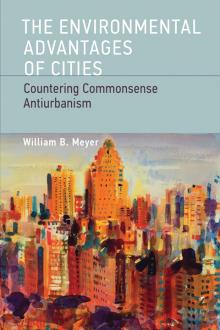 THE ENVIRONMENTAL ADVANTAGES OF CITIES: Countering Commonsense Antiurbanism
THE ENVIRONMENTAL ADVANTAGES OF CITIES: Countering Commonsense Antiurbanism
by William B. Meyer; MIT Press, $26 paperback, 248pp.
William Meyer is an associate geography professor at Colgate University.
OPEN FOR BUSINESS: Conservatives' Opposition to Environmental Regulation
by Judith A. Layzer; MIT Press, $35, 499pp, hardcover.
Covers evolving tactics by rightwingers and their army of lobbyists and frontmen, in and out of government, since the Nixon era, to undo responsible environmental regulations.
Books from 2012:
THE BEGINNING of THE AMERICAN FALL: A Comics Journalist Inside the Occupy Wall Street Movement
by Stephanie McMillan; Seven Stories Press, $16.95, 141pp, paperback.
This graphics non-fiction book is a courageous attempt to understand and explain the Occupy Wall Street movement, which began in NYC in September 2011 and eventually revealed to millions of Americans the destructive one percent/99 percent economic split in our society. A key theme McMillan explores is how to effect positive social change, when confronted with a powerful, entrenched, deeply unsustainable and unjust political and economic system. NYC transit activists face just such a Goliath (actually an army of Goliaths): the city's and the state's governments, captured by special interests.
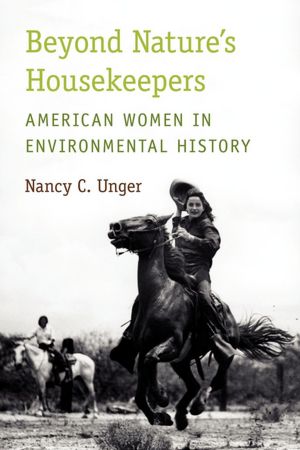 BEYOND NATURE'S HOUSEKEEPERS: American Women in Environmental History
BEYOND NATURE'S HOUSEKEEPERS: American Women in Environmental History
by Nancy C. Unger; Oxford U Press, $24.95, 319pp.
Until very recently, women have not been in the forefront in public transit advocacy. They have, however, played key roles in the American environmental movement, as this sweeping survey of women's activism, written by Nancy Unger, a history professor at Santa Clara University, shows. The book begins with the Pilgrims in the 1620s struggling with food shortages, and concludes with the modern environmental justice movement.
There is little here about public transportation, except for one section, "Growthmania," about postwar suburbanization, and the simultaneous destruction or defunding of urban transit systems nationwide. The postwar era's drastic increases in car use led to dramatic increases in air pollution, leading to more and more protests, particularly in Los Angeles, because of its smog-catching geography. Professor Unger describes women's groups in the LA area organizing all-women marches against smog in 1954, when those sorts of things just weren't done. The marchers called themselves, in Disneyesque fashion, "Smog-A-Teers" and wore gas masks and carried banners. This publicity led to further organizing, but this local movement still got run over by the ever-burgeoning car monoculture, worsened by the Interstate Highway Act just two years later, in 1956.
STRAPHANGER: Saving Our Cities and Ourselves from the Automobile
by Taras Grescoe; Times Books/Henry Holt, $25.00, 322pp.
Following in the footsteps of James Howard Kunstler and Roberta Brandes Gratz, Taras Grescoe brings us this highly readable account of the latest goings on in the transit systems of the world's great cities, starting with NYC's Second Avenue subway. He takes us to Los Angeles, Phoenix, Paris, Copenhagen, Moscow, Tokyo and others. He fully recognizes the utter crisis that the nation is facing, in failing suburbs, in rising energy costs, in our damaged cities, due to overreliance on the automobile and the turn away from public transit after WWII.
CRABGRASS CRUCIBLE: Suburban Nature and the Rise of Environmentalism
by Christopher C. Sellers; Univ of North Carolina Press, $42, 384 pp.
Chris Sellers is an associate professor at SUNY-Stonybrook.
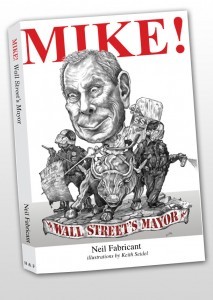 MIKE! WALL STREET'S MAYOR
MIKE! WALL STREET'S MAYOR
by Neil Fabricant; illustrations by Keith Seidel; Hacks & Flacks Press, $15.95.
It is a testament to Mayor Bloomberg' skills in public relations that he has managed to avoid being labeled "Mayor One-Percent", considering his lopsided role in succoring the rich and tightening the screws on everyone else in the city. Long delayed quality of life improvements for city residents only began being implemented after the expelling of the middle class, working class and the poor through widespread gentrification. This book by a former university president seeks to set the record straight: "luxury for the few, austerity for the many" -- a formula which includes the many indulgences still being lavished upon motorists. Meanhwile, so-called 'everyday' New Yorkers' quality of life continues to suffer from traffic, noise and smog.
TRAMS or TAILFINS? Public & Private Prosperity in Postwar W Germany & the US
by Jan Logemann; Univ of Chicago Press.
This scholarly book examines the cultural and economic conditions that influenced the different ways the US and West Germany developed in the decades after WWII. Today the US and Germany have roughly similar rates of car ownership, yet Germany has a vastly better public transit infrastructure, both within its cities and between cities, much less suburban sprawl, and its per-capita energy usage is about half that of the US (using 2004 figures). Logemann is a research fellow at the German Historical Institute in Washington DC.
RETHINKING A LOT
by Eran Ben-Joseph; MIT Press.
The author is a city planner and urban designer, now teaching landscape design at MIT. Lots of vintage photos, including some from the 1920s, of cities being engulfed in cars, but criticism of parking lots as traffic generators and biodeserts is at best muted. Mention of the SITE Ghost Parking Lot, a remarkable art installation of engulfed cars, which stood in a Hamden, CT parking lot from 1977 to 2003.
Books from 2011:
SUSTAINABILITY IN AMERICA'S CITIES: Creating the Green Metropolis
Edited by Matthew Slavin; Island Press, $40, 285 pp.
GLOBAL WARMING GRIDLOCK: Creating More Effective Strategies for Protecting the PLanet
by David G. Victor; Cambridge Univ Press, $40, 300 pp.
AMERICA'S GREAT RAILROAD STATIONS
by Roger Straus III; text by Ed Breslin and Hugh Van Dusen; Viking Studio/Penguin, $40.00, 235pp.
Photographer Roger Straus III, starting with New York's Grand Central Terminal, visited great train stations throughout America and documented some 43 of them in this handsome book of color photographs. They are arranged by region. Some stations have been turned into banks or shopping malls, with the rail function either ended, moved far away or to a nearby shack. The terrific essay, by rail buffs Ed Breslin and Hugh Van Dusen, and numerous archival photos, place these stations in historical context and bring them into the immediate present, at the brink of a new age of high-speed rail proposed by President Obama in 2009 and 2010, and subsequently derailed by congressional Republicans.
Books from 2010:
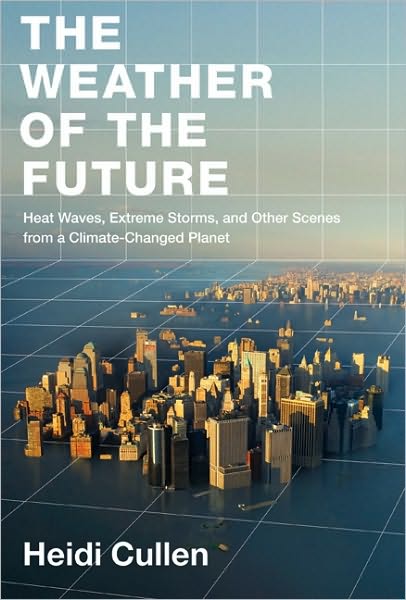 THE WEATHER OF THE FUTURE
THE WEATHER OF THE FUTURE
by Dr. Heidi Cullen; HarperCollins, $25.99, 352pp.
The cover of this book shows lower Manhattan under a storm surge of around 20 feet, caused by a direct hit from a medium-strength hurricane, which scientists predicted is likely in the next few decades. Hurricane Sandy was a lot less than that. Of course, this image is not something that NYC real estate interests and the NY Times like to contemplate, and so when the Times reviewed this book, they buried it on a back page of the business section and made sure the unsettling cover would never appear in their paper or on their website.
The book points out that sea levels are rising in the NYC area by about an inch per decade, which will worsen the impact of a storm surge. The infrastructure investments needed to counter the growing threat of storms and rising sea levels of the future have traditionally been greeted by City Hall here in NYC in much the same way New Orleans treated scientists' repeated warnings in the years before Hurricane Katrina hit - with a bureaucratic raised middle finger. And the billionaire former Mayor Bloomberg's 2007 PlaNYC, which set a 30 percent reduction in NYC's greenhouse gas emissions by 2030, was essentially more window dressing, since the city, even with our new Mayor, continues (a) frantically inking deals for more parking garages and big box stores; (b) investing heavily in highway expansion within the 5 boroughs; (c) refusing to confront the mismanaged MTA; (d) not shaming the governors of NY and NJ into working together on regional transit issues, and (e) strongly incentivizing motorists to avoid the transit system.
REQUIEM FOR A SPECIES: Why We Resist the Truth About Climate Change
by Clive Hamilton; Earthscan Publishing, 286pp.
Clive Hamilton is an ethics and philosophy professor at Australian National University.
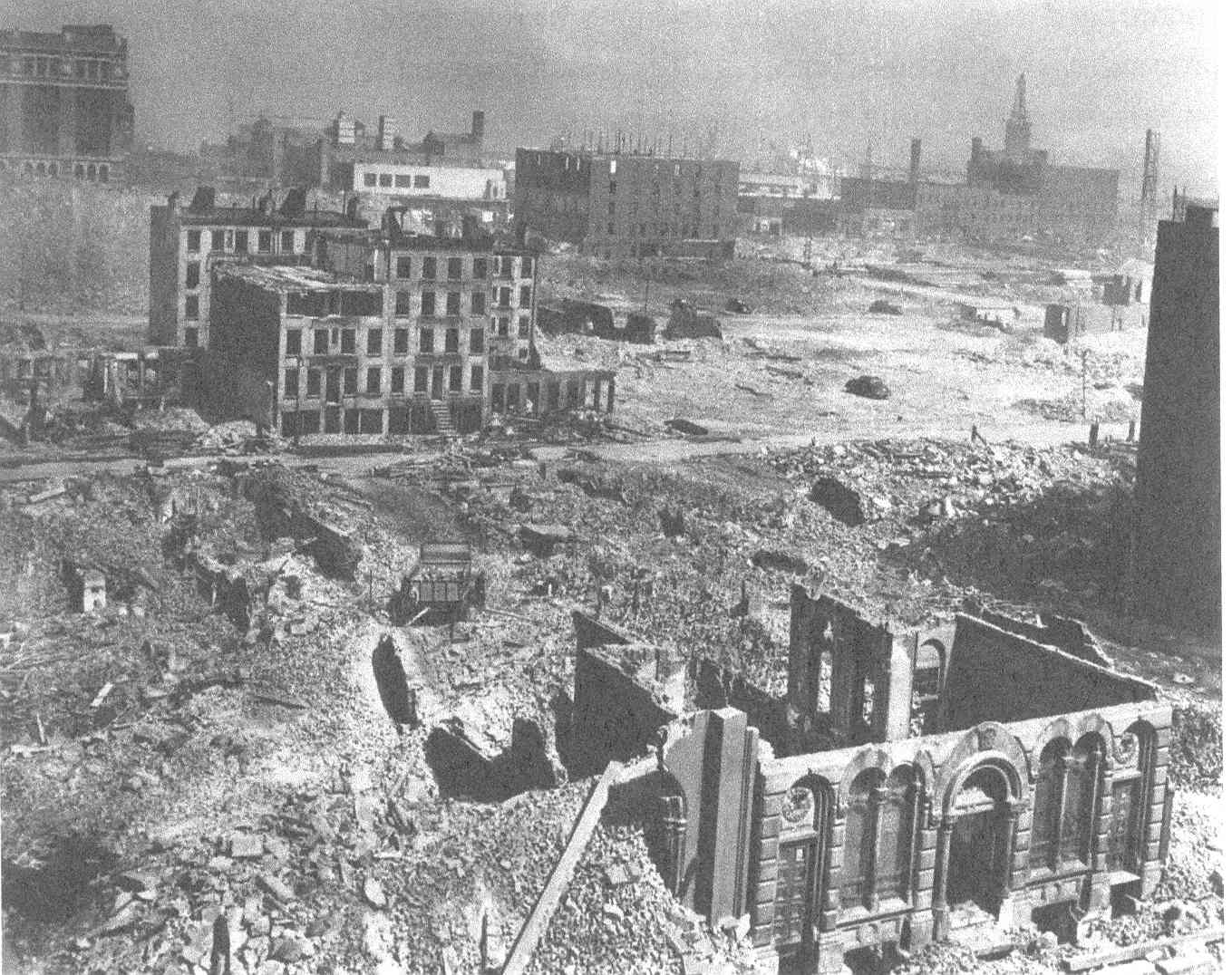 MANHATTAN PROJECTS: The Rise and Fall of Urban Renewal in Cold War New York
MANHATTAN PROJECTS: The Rise and Fall of Urban Renewal in Cold War New York
by Samuel Zipp; Oxford U Press, $24.95, 469pp.
At right is a picture from Samuel Zipp's new book showing the remains of the Gas House District in Manhattan in fall 1945, on what would become Stuyvesant Town. Sam Zipp is an urban studies professor at Brown University. Here he recreates the postwar historical atmosphere in NYC, as its government moved to fix the city's problems by frantically wiping away as many poor and working-class neighborhoods as it could, replacing them with suburban-style mega-projects like Stuyvesant Town, Lincoln Square, East Harlem and the UN complex. Well written, with special attention, including photos of protest, given to those grassroots activists who tried to stop or slow these behemoths and instead got utterly written out of history, in an almost Stalinist way, by the mainstream media.
ED KOCH and the Rebuilding of New York City
by Jonathan Soffer; Columbia U Press, $34.95, 494pp.
Sadly, in March 2011 the City Council in a 38-12 vote, obeyed billionaire Mayor Mike Bloomberg's command that the Queensboro Bridge be renamed the Koch Bridge. Meanwhile, this new biography of Ed Koch turns out to be a carefully researched look at his life and career as three-term mayor ('78 to '89), and a fine-grained portrait of the city from the '70s to the '90s. Soffer, a history professor at NYU's Polytechnic Institute, has done for Koch more or less what Robert Caro did for Robert Moses, and has set a new standard for modern NYC history. Koch, of course, stirred up much controversy during his time as Mayor, yet also played a large part in the city's recovery and revival. The NY Times pointed out on March 24, 2011 that one of the opponents of the bridge renaming, Councilman Peter Vallone Jr. from Queens, suggested "it would be a more appropriate tribute to name the city's Municipal Building [at the foot of the Brooklyn Bridge] for him." Don't miss the superb short description of how bank redlining works in NYC (pp. 74-75), or the dramatic mayoral election of 1977. Unfortunately, Soffer dismisses in one quick sentence the spectacle Koch made when he tried to get bicycles banned entirely from Fifth Avenue, claiming they blocked traffic.
MERCHANTS OF DOUBT: How a Handful of Scientists Obscured the Truth on Issues from Tobacco Smoke to Global Warming
by Naomi Oreskes and Erik M. Conway; Bloomsbury Press, $27, 355pp.
Naomi Oreskes is a history prof at UC-San Diego whose writings against global warming denial have been cited by Al Gore in "An Inconvenient Truth." This highly readable and well-documented book lays out how paid liars, often launched by rightwing 'thinktanks', try to subvert scientific truth about tobacco smoke, acid rain, the ozone hole, and global warming, in order to protect short-term corporate profits.
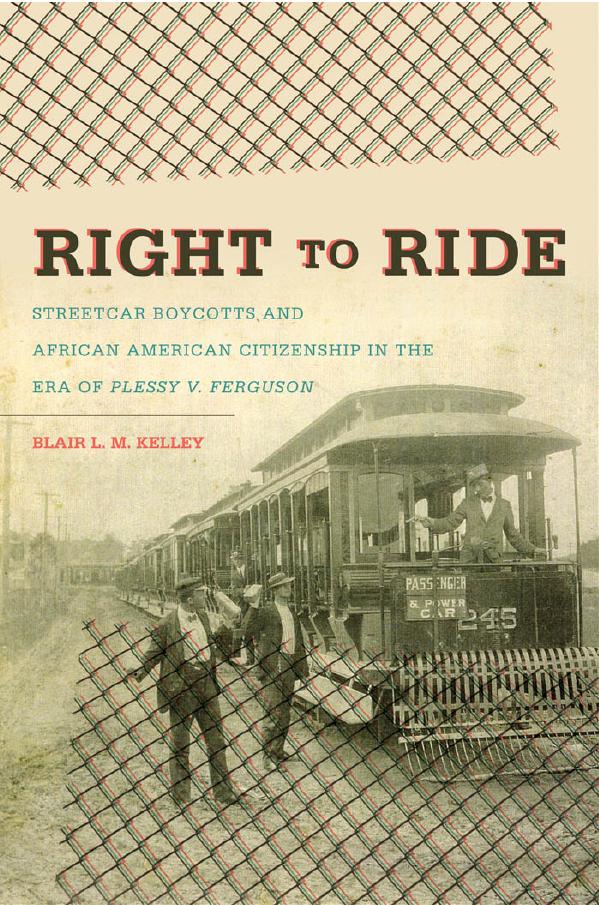 THE BATTLE FOR GOTHAM: New York in the Shadow of Robert Moses and Jane Jacobs
THE BATTLE FOR GOTHAM: New York in the Shadow of Robert Moses and Jane Jacobs
by Roberta Brandes Gratz; Nation Books, $27.95.
Ms. Gratz is one of our favorite authors, and a member of the Landmarks Preservation Commission. Here she tries to push back against the wave of recent revisionists who would have us believe that not only was Robert Moses not a racist who waged class war against the poor, but that all of the automobile and social disasters he visited on the city in his 40+ year tenure as chief builder were good for the city! She writes: "It is my contention that the Moses policies were largely responsible for the torn-apart, fallen city" of the Seventies . . . "It is also my contention that the modern city of today, which some would give Moses credit for, evolved despite the damage he wrought."
RIGHT TO RIDE: Streetcar Boycotts and African American Citizenship in the Era of 'Plessy v. Ferguson'
by Blair L.M. Kelley; Univ of North Carolina Press, $21.95 paperback.
Dr. Kelley is a history professor at North Carolina State University; her book looks at transit protests in New Orleans and the deep South.
GREEN GONE WRONG: How Our Economy is Undermining the Environmental Revolution
by Heather Rogers; Scribner, $26, 272pp.
Ms. Rogers, a reporter, came to notice among environmentalists via her book "GONE TOMORROW: The Hidden Life of Garbage." Here she criticizes the corporate marketing ploy of green consumerism, for example, the hundreds of ads on tv or in magazines like the New Yorker showing cars in forests or meadows surrounded by animals, when these vehicles' overuse is in reality destroying our natural world. But she unfortunately also horsewhips mainstream environmental groups, who already have a difficult enough path to take between preservation and sacrifice, between bad news and hope.
Books from 2009:
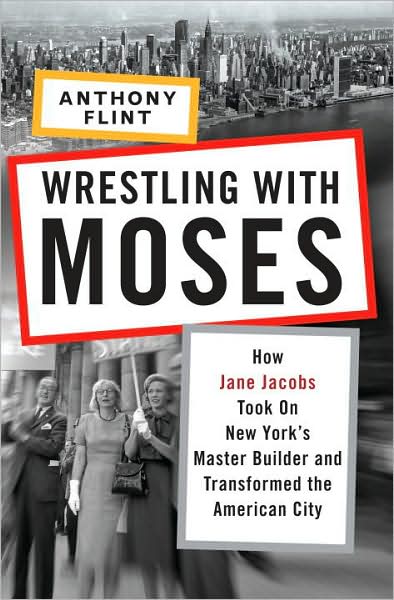
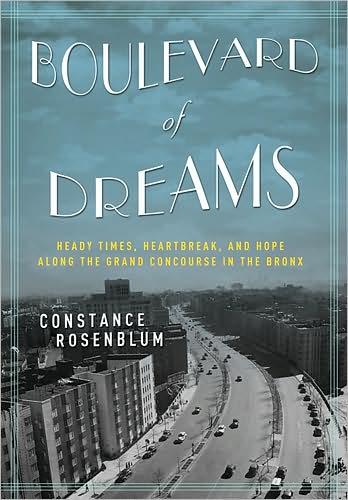 NAKED CITY: The Death and Life of Authentic Urban Places
NAKED CITY: The Death and Life of Authentic Urban Places
by Sharon Zukin.
Ms. Zukin is a sociology professor at Brooklyn College. Here she looks at the downsides of gentrification and how our once vibrant neighborhoods are becoming ever blander: the same dreary bank branches, the same chain stores selling plastic junk and the same franchise food pits peddling unhealthy trash food.
BOULEVARD OF DREAMS: Heady Times, Heartbreak and Hope Along the Grand Concourse in the Bronx
by Constance Rosenblum; NYU Press, $27.95.
A scholarly social and technical history of the rise and fall and rise again of the Grand Concourse. Rosenblum is a writer and editor at the NY Times.
UGLY WAR, PRETTY PACKAGE: How CNN and Fox News Made the Invasion of Iraq High Concept
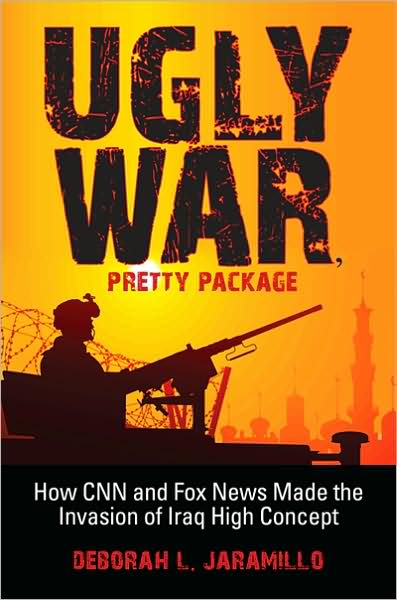 by Deborah Jaramillo; Indiana U Press, $22.95.
by Deborah Jaramillo; Indiana U Press, $22.95.
As of summer 2011, the Iraq war cost US taxpayers at least 800 billion dollars (a very conservative estimate supplied by CostofWar.Com), along with some 4,000 US soldiers killed, 30,000 wounded, and perhaps 100,000 Iraqis killed. Millions of Iraqis were made homeless or became refugees; countless others were thrown into new prisons provided for by US taxpayers. The dictator Saddam Hussein was eventually located and killed without a trial. Was this worth it to the American people? Are we any more secure or less dependent on foreign oil after this invasion and occupation?
MANNAHATTA: A Natural History of New York City
by Eric W. Sanderson; Abrams, $40, 351pp.
Imported from China and printed on non-recycled paper, this massive tome helps us imagine what Manhattan looked like just before its discovery in 1609 by Henry Hudson - an ecological paradise of scrub forest, marsh and meadow supporting some 300 to 1,200 Lenape Indians. The author, Eric W. Sanderson, a landscape ecologist at the Wildlife Conservation Society, moved to NYC in 1999 from suburban California. How useful such a well-meaning and gently romantic book can be to the NYC of today, with its chronic crises of air pollution, traffic jams and uncoordinated transportation planning/investment, is unclear. Sanderson included a whopping 46 pages of exhaustively researched appendices of Mannahatta's natural features, intriguing but conjectural Lenape campsites, and original flora and fauna. But the appendix listing "good, concrete ideas about how to make more cities livable and sustainable" (pp. 307-309) only mentions one actual group -- Transportation Alternatives. As for streetcar advocacy, Sanderson mumbles an obscure reference to a 2006 book published by Oakland, CA-based Reconnecting America; he omits various groups actually based in modern-day Mannahatta, including Auto-Free NY, which strongly advocates for substantive change that would lead to a genuinely sustainable city, rather than baby steps meant to placate and sidetrack environmentalists.
Looking at the beautiful illustrations of an idyllic natural island in this book, it's hard to avoid the conclusion that the author perhaps wishes that rather than heal itself of its gross environmental failings, NYC could somehow just be magically swept clear of all its current civilisation traces and returned to a quiet scrub forest and marshland with sandy shores, little Indian villages and frolicking deer, muskrats and butterflies.
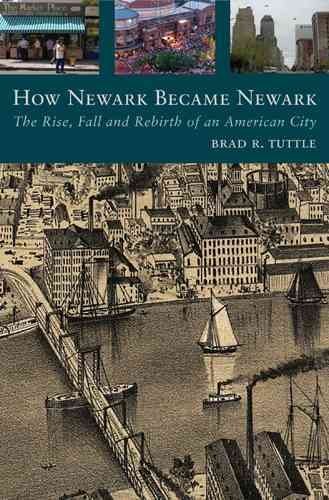 CRUDE WORLD: The Violent Twilight of Oil
CRUDE WORLD: The Violent Twilight of Oil
by Peter Maass; Knopf, $27, 276pp.
Maass is a contributing writer for the New York Times Magazine, which has a poor track record of environmental journalism - we remember one cover story where John Tierney, the paper's science writer (still there!) angrily, bitterly denounced environmentalists. Maass focuses here not on such compromised corporate media as that paper but on the cruel dictators and oligarchies controlling nations whose chief source of wealth is oil.
HOW NEWARK BECAME NEWARK: The Rise, Fall and Rebirth of an American City
by Brad Tuttle.
A scholarly look at once-great Newark, New Jersey's biggest, and perhaps tied with Camden, its most benighted city.
$20 PER GALLON: How the Inevitable Rise in the Price of Gasoline Will Change Our Lives for the Better
by Christopher Steiner; Grand Central Books.
Steiner is a staff writer for Forbes Magazine. The social panic that erupted when gas hit $4 per gallon in the summer and fall of 2008 has yet to be studied - suddenly public transit advocates, rather than being ignored or ridiculed, were surrounded by crowds of supplicants. By late '09, gas prices had returned to the $3 per gallon range, but don't worry - it is guaranteed to go up again in the near future. Steiner writes of a future of $20 per gallon gas, so imagine how accepted public transportation will be then!
WRESTLING WITH MOSES: How Jane Jacobs Took on NY's Master Builder and Transformed the American City
by Anthony Flint; Random House, $27, 231pp.
FOLLOW THE MONEY: Who Controls New York City Mayors?
by Lynne A. Weikart; SUNY Press, $19.95 paperback, 194pp.
HIJACKING SUSTAINABILITY
by Adrian Parr; MIT Press.
A critique of the American-led multi-national corporate takeover of the concept of sustainability, with focus on Hollywood environmentalism, sustainability in politics, and the "greening of junkspace."
PEDALING REVOLUTION: How Cyclists Are Changing American Cities
by Jeff Mapes; Oregon State University, $19.95, paper, 228 pp.
CRASH COURSE: The American Automobile Industry's Road from Glory to Disaster
by Paul Ingrassia; Random House, $26, 320pp.
Ingrassia is a Wall Street Journal reporter who has covered Detroit for years. AFNY enthusiasts may find interesting the parts that deal with the 2009 hearings in Washington, DC. The Big Three auto company CEOs arrived at these hearings separately by private jet, blithely expecting their cut of a $25 billion bailout, but were unable to answer even basic questions. One consequence was President Obama's firing of GM's Rick Wagoner. However, based on recent arrogant speed- and bulk-flaunting car ads, it appears GM has learned nothing.
Books from 2008:
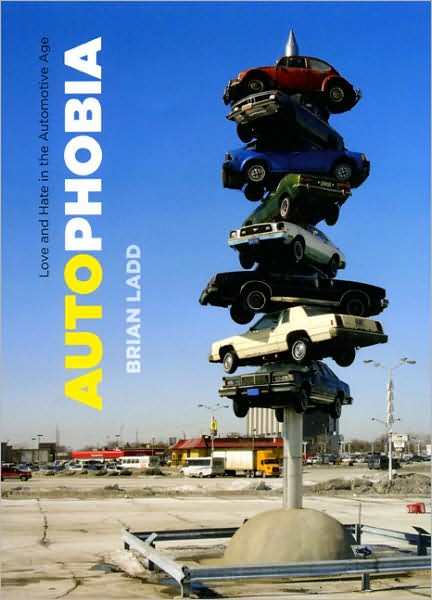
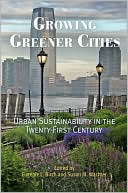 MASS MOTORIZATION AND MASS TRANSIT: An American History and Policy Analysis
MASS MOTORIZATION AND MASS TRANSIT: An American History and Policy Analysis
by David W. Jones; Indiana U Press, $39.95, 268pp.
GROWING GREENER CITIES: Urban Sustainability in the 21st Century
edited by Eugenie Birch and Susan Wachter; U-Penn Press, $34.95, 392pp.
AUTOPHOBIA: Love and Hate in the Automotive Age
by Brian Ladd; University of Chicago Press, $22.50, 227pp.
DOUBT IS THEIR PRODUCT: How Industry's Assault on Science Threatens Your Health
by David Michaels; Oxford U Press, $15.98 (on sale), 372pp.
CENTRAL PARK IN THE DARK: More Mysteries of Urban Wildlife
by Marie Winn; Farrar, Straus Giroux, $25, 304pp.
Most New Yorkers have little contact with the natural world and lots of contact with merchandising, corporate propaganda, shrubbery, pigeons, litter, hipsters and speeding cars. So it's no wonder that such a book would appear, detailing the marvelous wildlife that manages to live in Central Park. Ms. Winn was formerly a nature columnist for the Wall Street Journal (a bit of an oxymoron occupation?) and writes vividly as a field biologist about moths, owls, hawks, raccoons, etc. She includes a history of automobile traffic in the park.
Books from 2007:
CONQUERING GOTHAM: A Gilded Age Epic, the Construction of Penn Station and its Tunnels
by Jill Jonnes; Viking Press, $27.95.
Jill Jonnes is a historian of cities who has written a number of books, such as on the Eiffel Tower and most recently, urban forests.
BLOCK BY BLOCK: Jane Jacobs and the Future of New York
[Essays] Edited by Chris Klemek; Princeton Architectural Press, $17.95.
A collection of short essays published in collaboration with the Municipal Art Society of New York. Block by Block revisits Jane Jacobs' seminal 1961 book, The Death and Life of Great American Cities, a must-read, which changed the course of planning in American cities. At the very least, her book made it much harder for the bad guys to talk openly of "slum clearance".
AS THE WORLD BURNS: 50 Simple Things You Can Do to Stay in Denial
by Derrick Jensen and Stephanie McMillan; Seven Stories Press, $14.95 paperback.
A graphic novel decrying tokenism and naivete in green consumerism while advocating more substantive environmental activism.
THE WORLD WITHOUT US
by Alan Weisman; St. Martin's $24.95.
[Being reviewed.]
BLESSED UNREST: How the Largest Movement in the World Came Into Being and Why No One Saw It Coming
by Paul Hawken; Viking Press, $24.95, 342 pp.
Author Hawken, founder of the gardening chain Smith & Hawken, looks at the global grassroots environmental activist movement, which he estimates at about 2 million organizations - that's organizations, not people. "Sustainability, ensuring the future of life on earth, is an infinite game, the endless expression of generosity on behalf of all," he writes. Mainstream corporate public relations, of which Americans are utterly surrounded by, would have us believe the exact opposite.
ARCHITECTURE OF THE ABSURD: How "Genius" Disfigured a Practical Art
by John Silber; Quantuck Lane Press, $27.50, 128 pp.
Modern cities have been disfigured by new eyesore buildings. Silber here examines "starchitects" and the absurdist, often dysfunctional buildings they have made, both here and abroad. Silber writes from his 25-years experience as (the often controversial) president of Boston University, during which time he oversaw a building program of over 13 million square feet. Here in NYC we have NY Times architecture critic Nicholai Ouroussoff, who routinely sneers at historical preservationists even as he cheerleads the monstrously oversized eyesores going up all over the city despite community opposition.
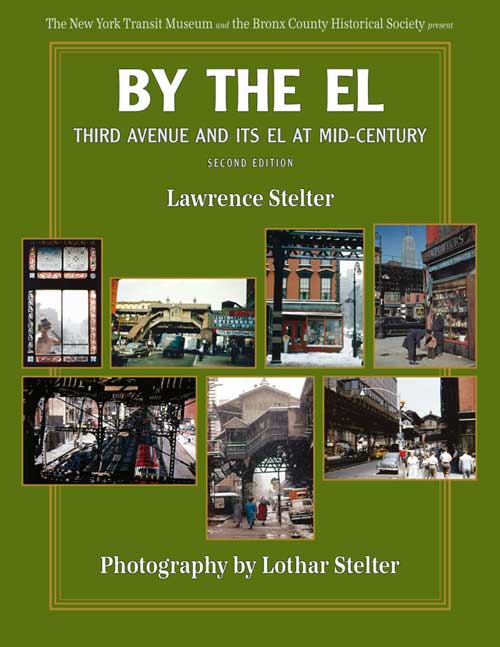 BY THE EL: Third Avenue and its El at Mid-Century
BY THE EL: Third Avenue and its El at Mid-Century
by Larry Stelter, 2nd edition, $19.95, 132pp, paperback.
Now in an updated and expanded second edition, this loving tribute to Manhattan's Third Avenue El, torn down in 1955, is based on Mr. Stelter's father's extensive color photo collection of the elevated train line he took while it was still in use. This edition updates the out of print 1995 hardcover with a new Bronx section with 18 new El photos; digitised, corrected vintage photographs; new track schematics, and essays by officials from the Transit Museum and the Bronx Historical Society. Available at the New York Transit Museum shops in Grand Central Terminal and at 130 Livingston St., Brooklyn, or in better bookshops, or by the internet, at www.bytheel.com.
THE DOWN-TO-EARTH GUIDE TO GLOBAL WARMING [Childrens' book, Ages 8 and up]
by Laurie David and Cambria Gordon, Scholastic Books, $15.99, 112pp.
OLD PENN STATION [Childrens' book, Ages 5 to 9]
by William Low, Holt, $16.95.
TRANSIT MAPS OF THE WORLD
by Mark Ovenden, Penguin Books, $25.
NEW YORK CALLING: From Blackout to Bloomberg
edited by Marshall Berman and Brian Berger, Reaktion Books, $25, 400pp.
A collection of 28 essays and numerous photos put together by Marshall Berman, a City College professor, and Brian Berger, a journalist and photographer.
WATCHING THE TRAFFIC GO BY: Transportation and Isolation in Urban America
by Paul Mason Fotsch, Univ. of Texas Press, $22.95 paperback, 272 pp.
OIL ON THE BRAIN: Adventures from the Pump to the Pipeline
by Lisa Margonelli, Talese Books, $26, 324 pp.
TROLLEY WARS: Streetcar Workers on the Line
by Scott Molloy, University of NH Press, 238pp, paperback, $19.95
"We never used to be in such a hurry" - refers to the rapid conversion around 1900 of horse-drawn trolleys to electric power, and how society responded. This book, a paperback reprint of the original 1996 edition, is a highly readable account of the labor history and evolution of trolley lines in Rhode Island from the Civil War thru around 1910, and the bonds that developed between trolley crews and passengers.
Books from 2006:
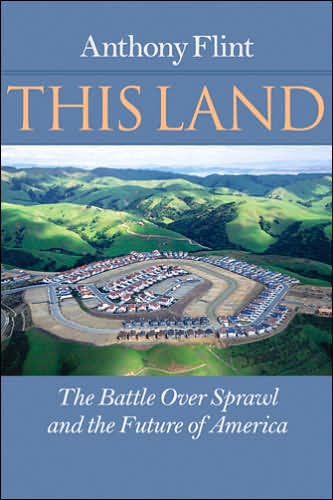 AN INCONVENIENT TRUTH
AN INCONVENIENT TRUTH
by Al Gore, Rodale Press, $21.95.
Perhaps the year's most important book (and movie), written by the former vice president and winner of the 2000 Presidential election by 500,000 votes. An essential primer on drastic climate change with much popular appeal, this book and movie instantly made life more complicated for all the industry-financed paid liars in the miniscule global warming denial community.
HOW TO LIVE WELL WITHOUT A CAR
by Chris Balish, Ten Speed Press, $?, 216 pp.
THIS LAND: The Battle Over Sprawl and the Future of America
by Anthony Flint, Johns Hopkins Univ., $24.95, 288pp.
Reviewer Chuck Leddy (Oct 2 '06 Boston Globe) says this book "offers a provocative and insightful overview of the challenges of sprawl"; the author "goes inside the backlash against the smart growth movement, showing how developers, builders and conservative think tanks joined together to attack anti-sprawl initiatives."
BIOGRAPHY OF A TENEMENT HOUSE IN NYC: An Architectural History of 97 Orchard Street
by Andrew Dolkart, Univ. of Virginia Press, $27.50, 160 pp.
GRAND ILLUSION: The Untold Story of Rudy Giuliani and 9/11
by Wayne Barrett and Dan Collins, HarperCollins.
This book is meant to pick up where Mr. Barrett's first book on Giuliani, RUDY! An Investigative biography of Rudolph Giuliani (Basic Books, hardcover, 498pp), left off, in spring 2000.
Books from 2005:
THE LONG EMERGENCY: Surviving the End of the Oil Age
by James Howard Kunstler, Atlantic Monthly Press, $23, 307 pp.
AMERICA'S MAYOR: The Hidden History of Rudy Giuliani's New York
edited by Robert Polner, with preface by Jimmy Breslin, Soft Skull Press, $16, 186pp.
Gives the alternate view of Mayor Giuliani rather than that advanced by the establishment hagiographer, center-right-wing Professor Fred Siegel, who soft-pedals Giuliani's disgraceful record in his 2005 book Prince of the City. See also below, in Books from 1999, Evan Mandery's book The Campaign.
HIKING LONG ISLAND
by Lee McAllister, New York-New Jersey Trail Conference, $19.99.
Think Globally, Hike Locally! Many people think Long Island is little more than endless ugly auto-dependent sprawl suburbs, permanently blighted downtowns and gated communities - "Status-Symbol-Land", as Billy Joel (or was it Springsteen?) once put it. This guidebook, written by a veteran hiker and Island native, will instead acquaint the reader with its less-known but extensive trail network, most of which, for NYC residents, is easily accessible from Queens. This book can help you avoid that long and demoralizing automobile ride through some of the nation's ugliest auto slums - a ride necessary when you want to get away from NYC and visit the natural planet. See also Sustainable Long Island, a Bethpage-based non-profit working to revitalize Nassau and Suffolk counties' over-paved, car-dependent, brownfield-riddled sprawl.
NEWS INCORPORATED: Corporate Media Ownership and Its Threat to Democracy
edited by Elliot D. Cohen, Prometheus Books, $26.
102 MINUTES: The Untold Story of the Fight to Survive Inside the Twin Towers
by Jim Dwyer and Kevin Flynn, Henry Holt and Times Books, $26.
A well-written recapitulation of the survivors' stories of escaping the Twin Towers during the 9/11 attack, but also setting the record straight (or at least straighter) about the culpability for the huge death toll, of our politicians, particularly Rudolph Giuliani, and the Port Authority and the building's designers. The NY Times actually ran two reviews of this book - one got it, one didn't. The one who got it was by Kevin Baker, who wrote on Jan. 21, 2005 that the book makes clear the twin towers were essentially a deathtrap in the event of a big fire, this had long been known, and Mayor Giuliani and his cronies were too busy strutting around making plans to rule the world, rather than doing their job -- which was to ensure that our emergency services were coordinated, properly equipped and, in a city jammed with skyscrapers, able to deal with any potential high-rise fires, particularly in the twin towers, which had been attacked before and were explicitly the subject of repeated threats. The other NY Times reviewer, James B. Stewart, writing in the Sunday Book Review (Jan. 9, 2005), just didn't get it.
Books from 2004:
THE SUBWAY AND THE CITY: Celebrating a Century
by Stan Fischler, Merriwell Inc.
A wide range of stories about the subway and the city, wrapped with many vintage and recent photos, calculated to appeal to all readers, including historians, sports buffs, rail fans, engineers and urban planners. Fischler, a sports writer, is also a huge fan of NYC public transit, and wrote the 1995 landmark Confessions of Trolley Dodger from Brooklyn.
GHOSTS OF 42nd STREET: A History of America's Most Infamous Block
by Anthony Bianco, Wm. Morrow/HarperCollins, $25.
This book focuses on the checkered history of a single block in NYC - 42nd Street between Broadway and Eighth Avenue. Being reviewed now to see if it has even a single mention of the massive trolley proposal that took place in the '90s but was torpedoed as soon as Giuliani took office. Bianco is a senior writer at BusinessWeek, a stronghold of the corporate media, which would explain the market censorship.
A FIELD GUIDE TO SPRAWL
by Dolores Hayden, W.W. Norton, $24.95, 128pp.
Some 75 aerial photos commissioned by the author help to spotlight America's wasteful sprawl spawned where greed and ignorance meet automobile-only development and failed government. Such aspects as boomburbs, zoomburbs, privatopias and ball porks join more well-known types as snout houses and McMansions.
THE SUBWAY AND THE CITY: Celebrating a Century
by Stan Fischler, Merriwell Inc., $39.95.
AMERICA'S OIL WARS
by Stephen Pelletiere, Praeger Publishing, $34.95.
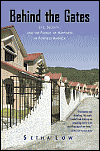 THE END OF OIL
THE END OF OIL
by Paul Roberts, Houghton Mifflin, $26.
RED SKY AT MORNING
by James G. Speth, Yale Univ. Press, $24.
THE CALL OF THE MALL
by Paco Underhill, Simon & Schuster, $14 paperback, 240pp.
Paco Underhill is a self-described "shopping scientist" and a Manhattan-based retail-design consultant. In a type of brass-knuckles class war, most modern shopping malls - Long Island's Roosevelt Field is a notable exception - have been deliberately designed without any or with only the barest minimum access to public transportation. Brainless consumerism and maximum environmental destruction are hallmarks of these American icons of modern life.
BEHIND THE GATES: Life, Security, and the Pursuit of Happiness in Fortress America
by Setha Low, Taylor & Francis, Inc., $18.95 paperback, 275pp.
Explores life inside a modern middle-class gated community, free from the 'contaminations' -- ie, people of the wrong color or social class -- of a typically urban/pedestrian lifestyle.
Books from 2003:
TRAGIC INDIFFERENCE: One Man's Battle with the Auto Industry over the Dangers of SUVs
by Adam Penenberg, Harper Collins, $25.95, 342pp.
The story of the struggle in the courts to confront Ford Motor Company and Firestone Tires over their unsafe products - in particular the 1990 to 2000 model year Ford Explorer SUV, of which some four million were built. Chronic lax government oversight over the US automobile industry is lightly touched upon here - in particular the National Highway Traffic Safety Administration (NHTSA).
MY TIMES: A Memoir of Dissent
by John L. Hess.
John Hess, a reporter for the NY Times until 1978 (he died at age 87 in Jan. 2005), wrote this scathing indictment of the newspaper that wields so much influence for better and worse over our lives. Needless to say, no review or even mention of this book has appeared in the paper. Alex Zaitchik wrote in the free weekly NY Press (Jan. 26, 2005) about the book: "My Times is Hess' monument to the future. It is a devastating account of how the paper helped Robert Moses ravish the Bronx and Pat Moynihan libel the poor; how it blew My Lai, Watergate and the banking scandals that almost bankrupted the city [ca. 1975]; how it played along with the CIA abroad and Con Ed and Lilco at home; how it helped to wreck the campaign for national health insurance . . . "
SEA GATE REMEMBERED
by Arnold Rosen, Xlibris Press, $21.99 paperback, 278pp.
New York City's first gated community, at the western end of Coney Island.
WHERE VULTURES FEAST - Shell, Human Rights and Oil in the Niger Delta
by Ike Okonta and Oronto Douglas, Verso Books, $24.
HIGHWAY ROBBERY - Transportation Racism and New Routes to Equity
by Robert Bullard, Glenn Johnson, Angel Torres, editors, South End Press, $20.
THE RIGHT TO THE CITY: Social Justice and the Fight for Public Space
by Don Mitchell, Guilford Press, $23.
TILTING AT MILLS: Green Dreams, Dirty Dealings and the Corporate Squeeze
by Lis Harris, Houghton Mifflin, $25.
Lis Harris is a former New Yorker Magazine staff writer. Here she reviews the 8-year-long rise and fall of the innovative "green" plan put forth by Allen Hershkowitz, a senior scientist at the NRDC, to build a paper-recycling mill in a rail yard in the South Bronx, and how it ended up, in his view, dying a slow death from "a million bureaucratic bee stings."
Books from 2002:
BETWEEN EMINENCE & NOTORIETY: Four Decades of Radical Urban Planning
by Chester Hartman, CUPR Press, $25; 405 pp.
RESOURCE WARS: The New Landscape of Global Conflict
by Michael T. Klare, Owl Books (Henry Holt], $? hardcover.
[not reviewed]
HIGH AND MIGHTY: SUV's -- the World's Most Dangerous Vehicles and How They Got That Way
by Keith Bradsher, New York: Public Affairs, $28 hardcover.
SELLING THE LOWER EAST SIDE: Culture, Real Estate and Resistance in NYC
by Christopher Mele, Univ of Minn. Press, $19.95 paperback.
THE CREATIVE DESTRUCTION OF MANHATTAN, 1900-1940
by Max Page, Univ. of Chicago Press, $27.50 hardcover.
Books from 2001:
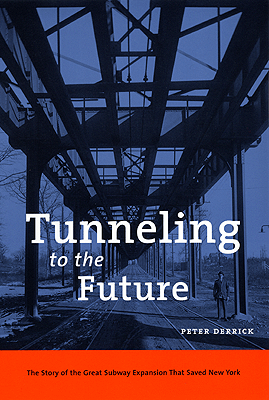 TUNNELING TO THE FUTURE: The Story of the Great Expansion that Saved New York
TUNNELING TO THE FUTURE: The Story of the Great Expansion that Saved New York
by Peter Derrick, NYU Press, 456 pp, hardcover.
A scholarly look at the political dealmaking that led to the massive expansion of NYC's subway system between 1910 and 1931. Mr. Derrick is the archivist for the Bronx County Historical Society and has been a guest speaker at our AFNY meetings (in 2005).
THE CITY IN MIND: Meditations on the Urban Condition
by James Howard Kunstler, The Free Press, $25 hardcover.
Mr. Kunstler has written here another must-read for students of the urban condition. For this book, Kunstler, author of the best-sellers The Geography of Nowhere (1993), and Home From Nowhere (1996), visited eight major cities, from 1993 to 2001, writing with his usual biting wit and incisive criticism: Paris, Atlanta, Mexico City, Berlin, Las Vegas, Rome, Boston and London. His forecasts about the consequences of the end of cheap oil, seen in the light of the panic generated by the $4 per gallon gasoline episode of fall 2008, are proving remarkably prescient, if a bit grim. His conclusions for American cities? Atlanta: "[its] only plausible destiny . . . is to become significantly depopulated." Las Vegas: "the most plausible future for Las Vegas is as a ghost town, an atomic-age Teotihuacan, viewed, say 200 years from now, a scene of silent desolation, the ancient Strip empty of cars, the once-lush medians devoid of palm trees, the Bellagio's fabled lake a cracked concrete shell with the plumbing long stripped by salvage scavengers . . ." Interestingly, to Kunstler, Boston turns out to be a real winner, thanks to astute work by then-Governor Michael Dukakis in the '70s and '80s to save the subway system, trolley lines, commuter rail network and South Station. Check out Kunstler's website, which includes an acerbic and often funny Eyesore of the Month.
EMPIRE STATESMAN: The Rise and Redemption of Al Smith
by Robert A. Slayton, Free Press, $30.
Books from 1999:
THE CAMPAIGN: Giuliani, Messinger, Sharpton and the Race to Be Mayor of NYC
by Evan J. Mandery, Westview Press, $27 hardcover, 400pp.
Gives a detailed ground-level view of the 1997 NYC mayoral campaign and how dirty politics, dirty media and paid liars under the leash of the NYC establishment contrived to subvert democracy. Mandery, a lawyer and research director for Ruth Messinger's doomed campaign, is unsparing of his portraits of all the key players.
Books from 1997:
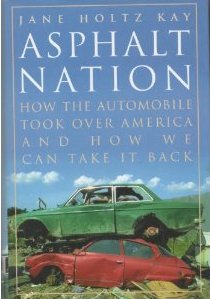 ASPHALT NATION: How the Automobile Took Over America and How We Can Take It Back
ASPHALT NATION: How the Automobile Took Over America and How We Can Take It Back
by Jane Holtz Kay, Crown Publishers, $27.50 hardcover.
Jane Holtz Kay's new book relentlessly challenges America's "love affair with the automobile." Asphalt Nation promises and delivers a series of measures to reduce auto use as a solution. As a dedicated auto-free activist, I am very much in agreement with virtually every colorful word and turn of phrase that Ms. Kay, a widely respected architectural critic, offers. The book is a must read for those of us who have been raising these same concerns through the years.
She begins with her visit to the first ever Auto-Free Cities Conference, held in NYC a little over six years ago. Though not mentioned in the book, her review of that conference was the first ever serious treatment of the auto-free movement in the NY Times.
Asphalt Nation has been generally well received in the environmental and urban planning communities. Neverthelesss, some reviewers in the general press, like Hugo Lindgren, writing in Queens Newsday, have been put off by her massive indictment of the auto. They would have liked a few chapters on what the car has done for as well as to America. But given the almost religious intensity of automobile worship [and indoctrination] in America, and the corresponding marginalization of non-drivers, I think her fevered pitch is indeed appropriate.
She is really at her best when she describes the devastation visited upon our cities in the name of "saving" them by making them more auto-friendly. While she savors her new-found auto-free life style in her beloved Boston, she speaks for many, many Americans who yearn for a similar non-auto-dependent urban setting. Ms. Kay tells us how America can and why it must move in that direction.
(review excerpted from the New York Streetcar News, July '97; written by George Haikalis)
FORTRESS AMERICA: Gated Communities in the U.S.
by Edward Blakely and Mary Gail Snyder, Brookings Inst. Press, $24.95.
THE UNREAL AMERICA: Architecture and Illusion
by Ada Louis Huxtable, New Press, $30.
Ms. Huxtable, a former architecture critic for the New York Times, turns a philosophical eye on places like Disneyland, the Mall of America, Las Vegas and neo-traditionalist planned towns, concluding that our sense of reality in our buildings has become blurred, and that the antidote should be abstract, minimalist, undecorated modernist experiments, of which she trots out several examples.
Ms. Huxtable apparently wrote this book to punch back at writers like James Howard Kunstler, who in The Geography of Nowhere and Home from Nowhere pinpoints modernist theories for the destruction wrought on our cities in the name of urban renewal. Although the book is for the most part a poorly argued polemic, it is still a spirited read, calling unabashedly for artistic innovation, while also surgically unmasking the Disney Company as first and foremost a cynical and highly profitable real estate marketing machine.
(review excerpted from the New York Streetcar News, Oct '97; written by W. Fields)
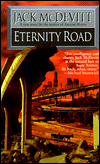 THE ENIGMA OF AUTOMOBILITY: Democratic Politics and Pollution Control
THE ENIGMA OF AUTOMOBILITY: Democratic Politics and Pollution Control
by Sudhir Chella Rajan, Univ. of Pittsburgh Press; $19.95.
As an engineer and veteran of the prolonged bureaucratic battles for clean air in California, Mr. Rajan argues for much greater public involvement and discourse on automobile pollution regulation. But his argument, while solidly built scientifically and politically, is hamstrung by his leaden academic prose, which because of its virtual unreadability, is guaranteed to have zero popular appeal.
(review excerpted from the New York Streetcar News, Oct '97; written by W. Fields)
ETERNITY ROAD
by Jack McDevitt, HarperPrism, $22.
This sci-fi novel's cover should catch the eye of transit advocates: under a lurid orange sky, a tiny horse-drawn wagon passes by the ruins of highways and offramps, with a generic high-rise city in the distance. The novel's potent theme, set more than 700 years after a plague ends our civilization in 2067, of a neo-primitive society looking back in fear and longing on the remnants of our once sophisticated world will remind the reader of movies like Planet of the Apes (1968) and Waterworld (1995). McDevitt tries in his unfortunately limited way to imagine our world without cars, and at one point, his characters take an almost mystical journey on a still working maglev interurban!
Alas, Eternity Road is very poorly paved. As is usual with escapist fiction, it suffers from cardboard-cutout characters, wooden dialogue, incongruous details and weak descriptions. It reads more like a sketch for a screenplay for a movie that would have to rely heavily on cheesy digital special effects. Readers will have to look elsewhere for a novel of the future that will do for our car-plagued planet what the classic dystopian novels Brave New World, 1984 and Animal Farm did for society in general.
(review adapted from the New York Streetcar News, Oct '97; written by W. Fields)
Books from 1996:
Home from Nowhere
by James Howard Kunstler, Simon & Schuster, 317 pp, hardcover. $24.00
Home from Nowhere continues the scathing critique of the American landscape and its discontents that first appeared in Kunstler's landmark 1993 book The Geography of Nowhere. But now Kunstler returns with remedies, describing recent successes and failures of "neo-traditionalists" in planning and building places people can care about.
Although focused on restoring towns and villages, Kunstler also appreciates Manhattan, where he grew up ("still one of the best working models out of our own history"), and of trolleys ("we have to look to Europe to see the longterm effect of the electric streetcar on cities, and their experience supports the view that streetcars do not destroy central cities").
Books on urban planning tend to be deadeningly boring and surprisingly conservative, but not Kunstler's. He wrote this book for ordinary citizens, not planners, and it is very entertaining. Occasional digressions and polemics do not otherwise detract from his powerful central argument. Sure enough, this book was arrogantly dismissed in the NY Times (Nov. 17, 1996) by Alexander Garvin, a professor at Yale and -- get this! -- a member of the NYC Planning Commission! That makes it a must read!
(review adapted from the New York Streetcar News, Jan '97; written by W. Fields)
Books from 1995:
Second Avenue El in Manhattan
By Joe Cunningham, NJ International, Inc., 66 pp, illustrated, softcover. $29.95.
One could not describe the long history of the Second Avenue Elevated in such a profusely illustrated book without including the streetcar lines crossing and running under its route. The photographs in this new volume present a priceless image of the neighborhoods and people served by this early yet very sophisticated rapid transit line.
Begun in 1879, within 18 months the Second Avenue El had grown to 7½ miles and reached 127th St., near the Harlem River. Later connections and extensions added riders from the Bronx and Queens, and even as late as 1938 the Manhattan els provided more trips than all of the competing subway services. Yet anti-elevated interests succeeded in closing the Second, Sixth and Ninth Avenue lines in just 43 months, while the Second Avenue subway, promised since 1927, never materialized.
Many have forgotten that, below 23rd Street, the Second Avenue El continued along First Avenue and Allen Street, providing the Lower East Side with rapid transit for more than sixty years until the last train ran from South Ferry to Astoria, Queens in June, 1942.
New Yorkers should also be reminded that one of the excuses for tearing down Manhattan's elevateds was that their columns kept getting in the way of speeding motorists. With the elevated trains gone, and with no median strips or dedicated trolley lanes to replace them, the inevitable result has been wide open avenues encouraging the plague of reckless motorists that bedevils us to this day.
(review adapted from the New York Streetcar News, Jan. '97; written by the editors)
TOXIC SLUDGE IS GOOD FOR YOU: Lies, Damn Lies and the Public Relations Industry
by John Stauber and Sheldon Rampton, Common Courage Press [Maine], $16.95.
Still in print! The essential primer on the manipulative corporate propaganda that Americans are mired in, propaganda designed singlemindedly to enhance corporate profits, at the cost of perpetuating the multiple environmental crises we are facing.
UNDERGROUND HARMONIES - Music and Politics in the Subways of New York
by Susie Tanenbaum, Cornell U Press, $17.95
This book about subway musicians, their history and the official reaction to them will undoubtedly be the standard reference for the next few decades. The book examin[es] NYC's historically tortured approach to public space, both above ground and in the subways. Tanenbaum explains how social elites pressed for official campaigns to eliminate the most democratic aspects of public space: musicians, including organ grinders, and trolleys. City Hall eagerly embraced the principle of "controlled community," which maintains that cities are safer and better when they are quiet and empty, and strangers are kept away, rather than the diversity ideal.
Ms. Tanenbaum, a Program Director at the Jackson Heights Community Development Corp., reminds readers that musicians increase world harmony, and that the City needs to rethink its extremely conservative, even provincial approach to its public spaces so that community-minded activities (and the trolleys that support them) can flourish.
(review excerpted from the New York Streetcar News, Jan. '97; written by W. Fields)
MORTGAGING THE EARTH: The World Bank, Environmental Impoverishment and the Crisis of Development
by Bruce Rich, Beacon Press.
Multinational oil extraction industries are among the most rapacious on the planet.
Books from 1993:
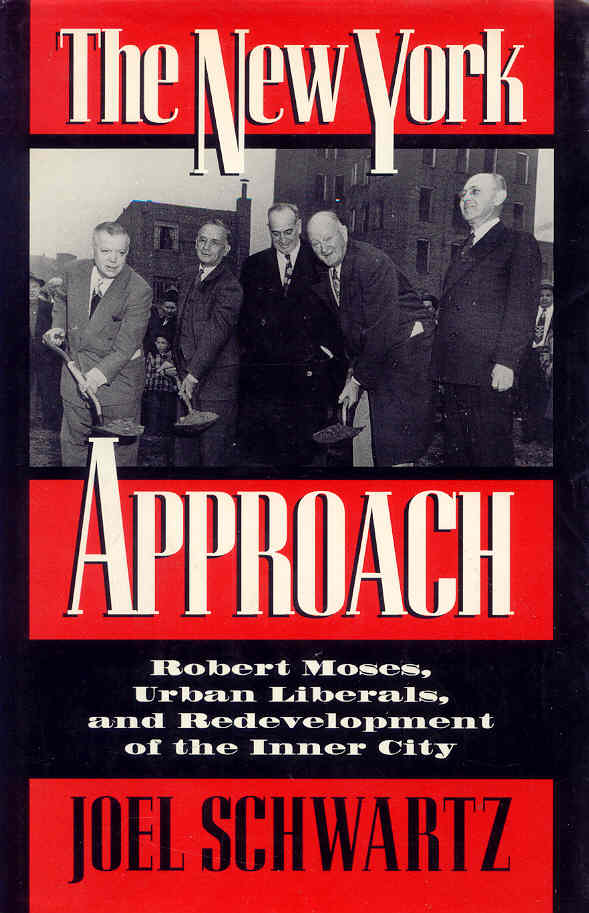 THE NEW YORK APPROACH: Robert Moses, Urban Liberals, and Redevelopment of the Inner City
THE NEW YORK APPROACH: Robert Moses, Urban Liberals, and Redevelopment of the Inner City
by Joel Schwartz, Ohio State U Press, $35 hardcover.
This out-of-print book attempts to answer the question of how New York's liberal establishment allowed master builder Robert Moses so much leeway in tearing down poor and working class neighborhoods to make room for middle class housing projects, office towers and highways to the suburbs. Exhaustively researched using original documents, the author's fine-grained account of the beginnings of NYC's public housing programs will probably be too detailed for the general reader.
It's certainly not a glorious part of New York's past. Racism and covert Jim Crow laws drove much of the decision making in the '40s and '50s, resulting in lots of defenseless people being evicted with little or no concern for their relocation. Residents and New York-o-philes will relish the tales of backroom negotiations that resulted in Stuyvesant Village, Lincoln Center, Morningside Heights, Manhattantown, the South Village and projects in Brownsville, Harlem and elsewhere.
Although trolleys are not the focus of this book, their intimate relation to land use and development make it important for trolley advocates to understand why real estate interests in New York so easily subvert City Hall and community interest. Today, at places like Brooklyn's Atlantic Center, Queens West and Riverside South, the public interest in good urban planning is usually set aside so that private developers, often highly subsidized by public monies, can build upper-middle-class and rich enclaves geared for motorists. These new developments' giant parking garages and general lack of transit facilities point directly to several more generations of New Yorkers condemned to traffic chaos and pollution.
(review adopted from the New York Streetcar News, Nov. '94; written by W. Fields)
Books from 1990:
THE CITY SQUARE: A Historical Evolution
by Michael Webb, Whitney Library of Design (Watson-Guptill), $45 hardcover.
This remarkable book, now out of print, is long overdue for a second edition, perhaps as a more affordable paperback. It's a richly illustrated survey of the history, design and use of the great plazas and squares of the world's most sophisticated and beloved cities. New York is represented here by Union Square and Rockefeller Center, both rather cramped and stingy compared to most other cities' great public spaces.
Books and reviews selected, written, revised and compiled by Wayne Fields except where noted.
Return to the Auto-Free NY home page.
© Copyright 2019, 2020. All rights reserved. Auto-Free New York.
|

